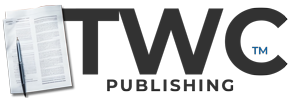The Media Dilemma: An In-Depth Analysis of the Mainstream Media Bloodbath and Its Implications
- (Free to use, no Attribution Required)
- Ai Generated with CaseGen App
- Teaching Notes, Case Analysis
- Accuracy and authenticity my be varied
See all of our case studies at www.teachingwithcases.com
Abstract:
This case study provides an extensive analysis of the recent crisis in the mainstream media industry, where nearly a dozen media companies have been forced to implement severe job cuts and grapple with the challenges of sustaining their businesses. The study looks into the factors contributing to this crisis, including the decline in ad growth, tensions between unions and management, as well as the implications for the future of journalism. It also explores efforts by media companies to sell off recognized brands and the potential market solutions for news.
Reference: [Fischer, Sara],. (2024, January 26). Mainstream media bloodbath: News outlets slash jobs as business suffers. Axios. https://www.axios.com/2024/01/26/media-layoffs-strikes-journalism-dying
Mainstream media industry
The mainstream media industry is currently facing a daunting set of challenges, as evidenced by significant cutbacks and layoffs at major news outlets. Companies such as Forbes, Insider, The New York Daily News, Paramount, The Los Angeles Times, Condé Nast, and Sports Illustrated have been embroiled in conflicts with their respective unions and announced substantial workforce reductions. These developments have raised concerns about the long-term sustainability of traditional media business models and the livelihood of journalists.
The media landscape
The drastic job cuts and turmoil within the mainstream media industry represent a sharp departure from the previous year’s expectations. The media landscape has experienced profound shifts, with digital advertising growth stagnating and companies grappling with high interest rates that impede their ability to secure new debt. As a result, media firms have found themselves in a precarious financial situation, prompting them to explore the sale of prominent brands in a bid to raise additional capital.
Implications for Journalists and the Industry: The rapid decline in the media business has ominous implications for journalism at the national, state, and local levels. The prolonged conflict between unions and management has highlighted the growing divide within news organizations, as trade disputes and layoffs exacerbate tensions. Furthermore, the sudden loss of hundreds of jobs has created significant uncertainty for journalists, raising questions about the future of traditional news outlets in the digital age.
Potential Market Solutions and Regulatory Responses
As the crisis in the mainstream media industry unfolds, analysts are predicting modest growth in digital advertising, presenting a less rosy outlook compared to previous years. In response to the absence of a market-based solution for news, there have been calls for regulatory intervention and philanthropic initiatives to support journalism. The study delves into potential pathways for addressing the financial challenges faced by news organizations, including the role of philanthropy, government intervention, and innovative business models.
Future Outlook
The current state of the mainstream media industry reflects a dire situation that has far-reaching implications for the future of journalism and the livelihood of media professionals. The case study concludes by offering insights into the potential trajectory of the media landscape, exploring scenarios for how companies may navigate the crisis and adapt to the evolving digital economy. It also underscores the urgency of addressing the systemic challenges faced by the industry and the need for innovative approaches to sustain quality journalism.
This research case study provides a comprehensive examination of the recent upheaval in the mainstream media industry, offering readers valuable insights into the multifaceted challenges and potential pathways for addressing the crisis. With a focus on the implications for journalists, the industry’s financial predicament, and potential market solutions, this study serves as a critical resource for stakeholders seeking to understand and navigate the rapidly changing media landscape.
Teaching Notes
Case Summary:
The case study provides an in-depth analysis of the recent crisis in the mainstream media industry, which has witnessed a wave of severe job cuts and organizational conflicts between unions and management. It examines how these challenges have compounded the already precarious financial situation facing news organizations. With the decline in ad growth serving as a key contributing factor, media companies are grappling with significant strategic decisions, including the potential sale of prominent brands to alleviate financial pressures. The case delves into the implications of these developments for journalism and media professionals, shedding light on the far-reaching consequences of such disruptions within the industry. Furthermore, it explores the landscape of potential market solutions, regulatory responses, and the need for innovative approaches to sustain the quality and integrity of journalism in the digital age. This case study aims to provide a comprehensive analysis of the multifaceted challenges facing the mainstream media industry and offers critical insights into the potential avenues for addressing these pressing issues.
Context and Background Information:
The mainstream media industry is experiencing significant turmoil, marked by substantial job cuts and conflicts between unions and management. Factors contributing to this crisis include declining ad growth and the subsequent financial challenges faced by news organizations. Media companies are also exploring the sale of recognized brands to raise capital, indicating a profound shift in the industry’s landscape.
Key Issues and Challenges:
– Declining ad growth and its impact on media sustainability
– Tensions between unions and management leading to workforce reductions
– The uncertainty for journalists and the future of traditional news outlets
– Potential market solutions and regulatory responses
Learning Objectives:
– To understand the factors contributing to the crisis in the mainstream media industry
– To analyze the implications of severe job cuts and conflicts between unions and management
– To evaluate potential market solutions and regulatory responses for sustaining journalism
Theoretical Framework:
The case study draws on theoretical frameworks related to media economics, labor relations, and market interventions. It encompasses concepts of financial sustainability, the impact of digital advertising on traditional media, and the dynamics of labor-management conflicts within news organizations.
Target Audience:
The case study is designed for students and professionals in media studies, journalism, communications, and business. It is particularly relevant for individuals with an interest in the media industry’s economic challenges, workforce dynamics, and the future of journalism.
Teaching Strategy:
The teaching strategy involves a combination of lectures, group discussions, and interactive activities. It encourages students to critically analyze the crisis in the mainstream media industry and explore potential solutions based on the theoretical frameworks presented.
Discussion Questions:
1. How have declining ad revenues exacerbated the crisis in the mainstream media industry, and what strategic measures can news organizations adopt to mitigate this challenge?
Answer: The declining ad revenues have strained the financial sustainability of news organizations, prompting severe job cuts and operational strife. News organizations can consider diversifying their revenue streams, embracing innovative advertising models, and strengthening subscriber-based business models to offset the impact of declining ad revenues.
2. What are the systemic factors underlying the tensions between unions and management within news organizations, and how can these conflicts be effectively addressed to ensure the well-being of media professionals?
Answer: The tensions between unions and management are rooted in disputes over job security, compensation, and workplace conditions, exacerbated by the financial pressures faced by news organizations. Addressing these conflicts requires a collaborative approach, involving transparent negotiations, the recognition of employees’ rights, and strategic labor-management agreements that prioritize the well-being of media professionals.
3. In what ways does the crisis in the mainstream media industry pose existential threats to the future of investigative journalism, and what innovative interventions can be implemented to safeguard the integrity of investigative reporting?
Answer: The crisis has led to significant layoffs and resource constraints, jeopardizing the capacity of news organizations to support robust investigative journalism. Innovative interventions may involve the establishment of nonprofit investigative journalism entities, collaborative partnerships between news organizations, and philanthropic initiatives to fund investigative reporting.
4. How can news organizations navigate the ethical complexities of potential brand sales while upholding their commitment to journalistic integrity and editorial independence?
Answer: News organizations must carefully deliberate the ethical implications of brand sales, ensuring that any such decisions align with journalistic values and editorial independence. Transparency, ethical guidelines, and safeguards to protect editorial autonomy are essential in navigating these complexities.
5. What regulatory interventions can be implemented to support the financial sustainability of traditional news outlets, and how can these interventions strike a balance between industry viability and editorial independence?
Answer: Regulatory interventions may include tax incentives for news organizations, subsidies for local journalism, and policies to combat monopolistic practices in the digital advertising market. Striking a balance between industry viability and editorial independence requires careful regulatory oversight and the consultation of media industry stakeholders.
6. How can news organizations effectively adapt their business models to respond to the digital advertising market’s mid-single-digit growth projections, and what transformative strategies can be pursued to capitalize on emerging digital revenue streams?
Answer: News organizations can adapt by leveraging data analytics to optimize advertising effectiveness, creating engaging multimedia content to attract digital audiences, and exploring partnerships with digital platforms to diversify revenue sources. Transformative strategies may involve the development of proprietary content distribution platforms and multimedia storytelling experiences to maximize digital revenue potential.
7. What are the consequences of severe job cuts on the diversity and breadth of news coverage, and what initiatives can news organizations undertake to preserve a diverse and inclusive newsroom amid reduced staffing levels?
Answer: Severe job cuts can result in diminished news coverage across diverse subject areas and communities. News organizations can prioritize diversity and inclusion through initiatives such as mentorship programs for underrepresented professionals, inclusive recruiting strategies, and ongoing training to ensure a diverse and equitable newsroom culture.
8. How can news organizations strike a balance between addressing financial challenges and maintaining a commitment to public service journalism, and what strategies can be employed to prioritize public interest reporting amid cost-cutting measures?
Answer: News organizations can strike this balance by identifying opportunities for cost efficiencies without sacrificing essential public service journalism. Strategies may include the reallocation of resources to prioritize public interest reporting, collaborating with community media outlets, and engaging in strategic partnerships to sustain vital journalism endeavors.
9. What implications do the conflicts between media unions and management have on the professional well-being of journalists, and how can news organizations foster an environment conducive to trust, collaboration, and fair labor practices?
Answer: The conflicts can profoundly impact journalists’ job security, morale, and work conditions, contributing to heightened stress and uncertainty. News organizations can foster an environment conducive to trust and collaboration by prioritizing open communication, engaging in constructive labor negotiations, and safeguarding fair labor practices to promote the professional well-being of journalists.
10. How can philanthropic initiatives play a role in sustaining quality journalism amid the mainstream media crisis, and what ethical considerations should guide the involvement of philanthropists in news organizations’ operations?
Answer: Philanthropic initiatives can have a significant impact by funding investigative reporting, supporting local news coverage, and advancing innovative journalism projects. Ethical considerations should center on maintaining editorial independence, transparency in donor relationships, and ensuring that philanthropic contributions align with journalistic values and principles.
Analysis of Key Issues:
Students will critically analyze the challenges posed by declining ad growth, the ramifications of severe job cuts, and the complexities of labor-management conflicts within news organizations. They will also explore potential market solutions and assess their viability in sustaining journalism.
Assignment or Project Ideas:
1. Develop a strategic plan for a news organization to navigate the financial challenges posed by declining ad growth.
2. Conduct a case study analysis of a media company’s union-management conflict and propose potential resolutions.
3. Design a proposal outlining regulatory interventions to support the sustainability of traditional news outlets.
Possible Outcomes and Conclusions:
The case study aims to foster a deep understanding of the crisis in the mainstream media industry, equip students with the ability to assess its implications, and cultivate innovative thinking regarding potential market solutions and regulatory responses. Students will gain insight into the multifaceted challenges facing the media industry and develop strategic perspectives for addressing these issues.

